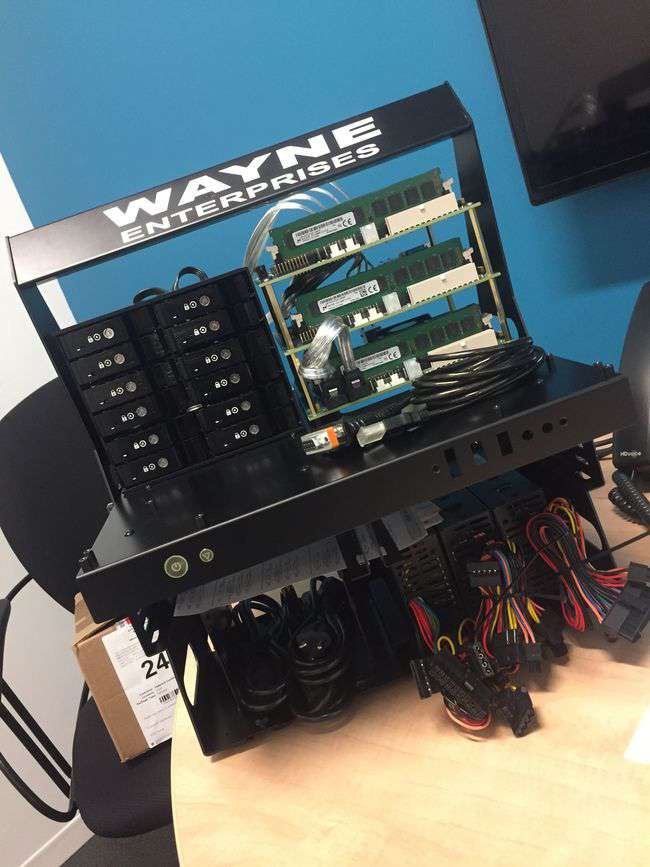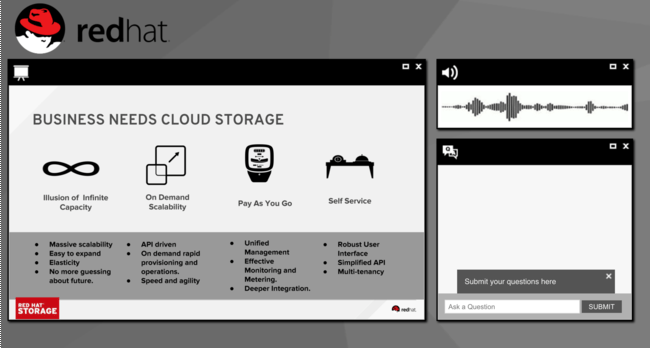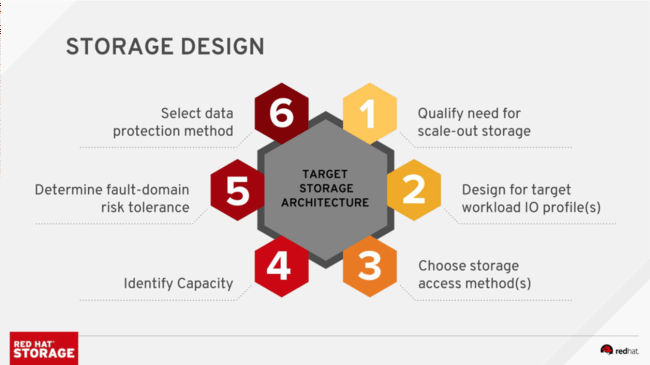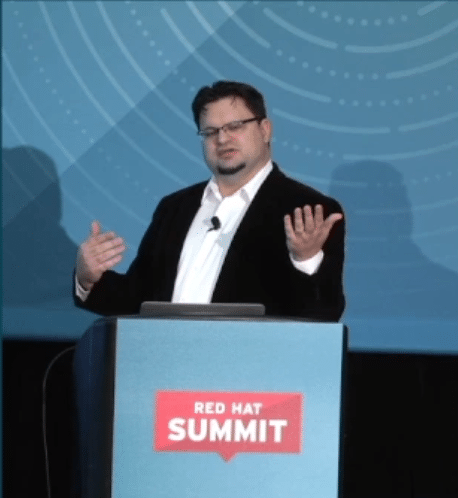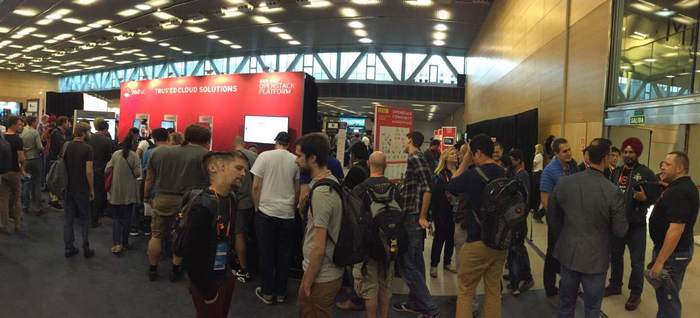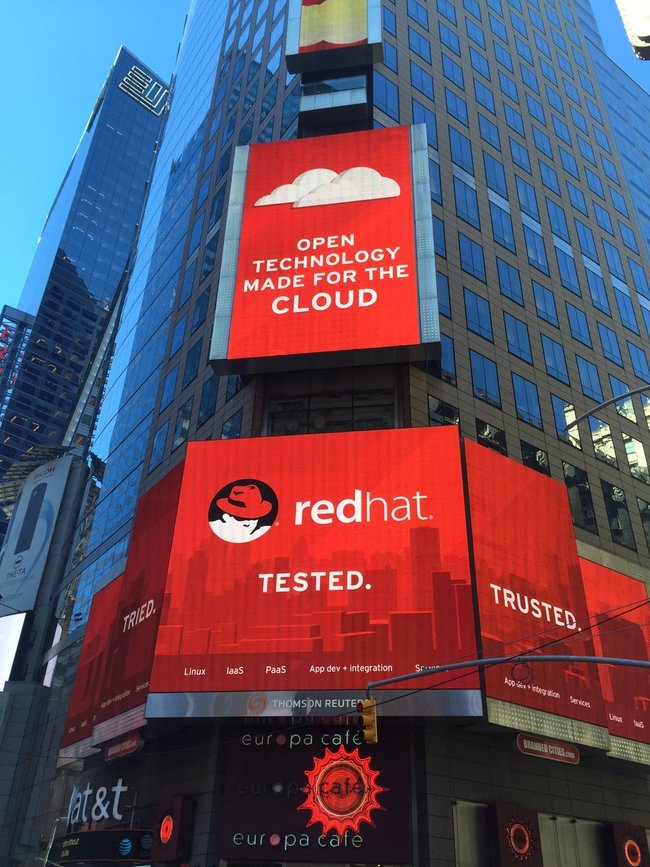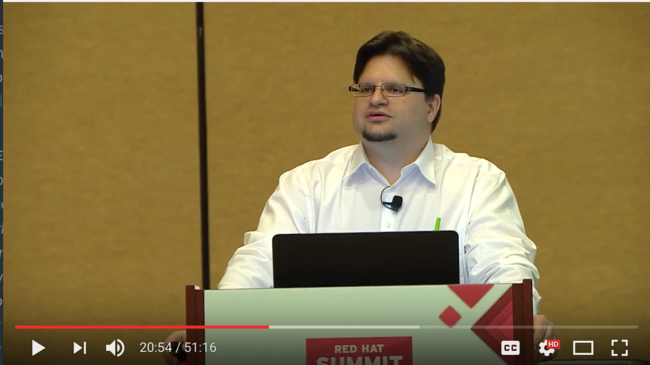Containers Down Under
Wherein the three musketeers travel to the antipode, find a fourth musketeer, and deliver a new talk in spite of jet lag
Sébastien Han and yours truly traveled to Sydney to meet with the gathering OpenStack Community and our very own D'Artagnan: Monsieur Andrew Hatfield.
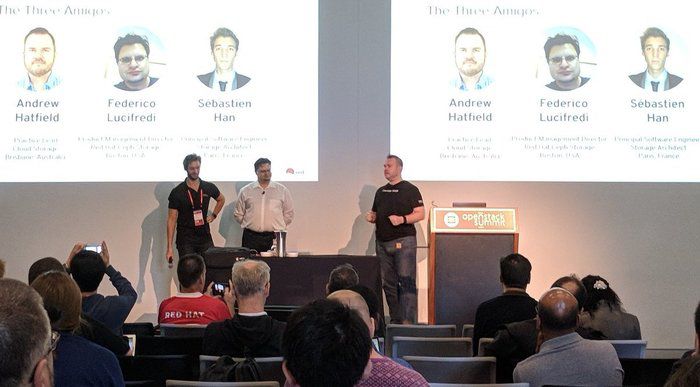
Discussing the progressive integration of OpenStack with containers, our talk spanned Linux, Docker, Kubernetes, and Ceph for maximum headache. Ansible and Triple-O tooling rounded up the whirling technology carousel — at least for seven minutes, until we introduced Kolla to a dizzy audience!
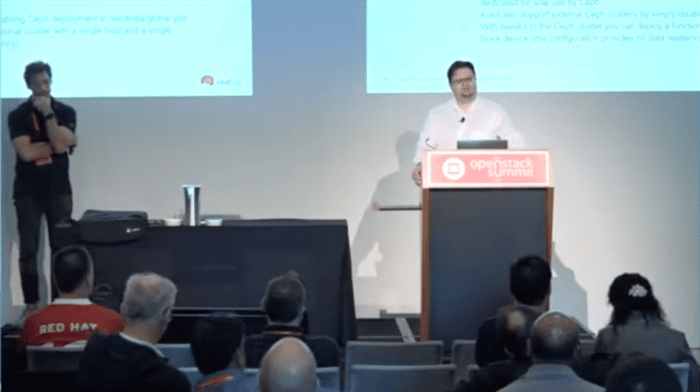
Thanks to the time-zone advantage, I also had the chance of being the first one globally to announce Red Hat Ceph Storage 3.0, launching today — all hosts are storage hosts now, with containerization!
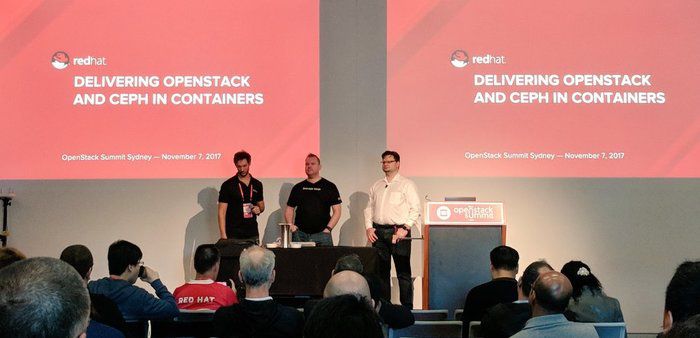
UPDATE The media team has now posted the live recording of our session in the OpenStack Foundation’s YouTube channel.
...


